It flies the fanciest product on the biggest planes on the longest routes, but Emirates may not have much more room to soar.
In their fifth week of training, women hired as flight attendants at Emirates Airline spend a day in Dubai with Pamela Mizzi.
A makeup artist from Malta who spent 12 years in the sky herself, Mizzi greets the students in a windowless instruction space about 20 feet across, lined on three sides by mirrors divided into vanities by bright roundels of light, like an old-timey dressing room. Her job is to teach the trainees how Emirates expects them to look.
Female cabin crew, referred to invariably as “girls,” are to tie their hair back in tight buns, preferably secured by a scrunchie in Emirates-brand red.
For makeup, a seven-step process is recommended, starting with foundation and concealer, then moving on to lipstick, also in preauthorized shades of crimson.
At the back of Mizzi’s classroom are two display racks of Emirates-approved emollients for “body shaping,” “firming,” “wrinkle control,” and “luminosity.”
“We have standards in regards to nail care,” Mizzi says. The same is true for weight. If a crew member looks too heavy, his or her superiors are to report their suspicions to a central fitness and nutrition department. “And they follow up,” she says.
Little escapes scrutiny. By the time crew members reach Mizzi’s classroom, they have moved into Emirates-managed apartments with Emirates-imposed curfews, travel to work in Emirates-branded minibuses, and see Emirates-employed doctors at in-house Emirates clinics.
The airline, which is based in Dubai and owned by its government, has become the world’s largest long-haul carrier by never relaxing its grip – on employees, on airplane manufacturers, or on its own ambitions.
Emirates recently configured a plane to seat a record 615 passengers, and flies epic nonstop routes such as the 8,824-mile arc from Dubai to Auckland. And Emirates is essentially the only buyer of the largest commercial airliner, the Airbus A380, which it gilds with stand-up cocktail bars and in-flight showers.
For every flight departing Dubai, as cabin crew head to their airplanes, the last room they traverse is a hall with mirrors on one side and windows to the tarmac on the other. The space allows workers to inspect themselves for perfection against a backdrop of government-owned taxiways thick with Emirates jets.
That’s the airline, in one image: glamour and ambition in a framework of absolute control.
Take-off trajectory
Since 1985, Emirates has grown from a two-plane operation at a desert airstrip into a force whose every movement rumbles through global aviation. The airline’s growth is inseparable from that of Dubai, with both straining the laws of financial and physical gravity.
The company’s chairman is Sheikh Ahmed bin Saeed Al Maktoum, the uncle of Dubai’s absolute monarch. He also runs the airport authority, the aviation regulator, and the city’s largest bank, should Emirates ever need a loan.
Out in the desert, a half-hour drive from the coast’s skyscrapers and malls, the government is building a $32 billion, five-runway megahub precisely to Emirates’ specifications. Its ambitions are consonant with its name: Dubai World Central.
The project will have a capacity of 220 million passengers per year, four times the number that New York’s John F. Kennedy International Airport serves today. Two-thirds of humanity lives within the radius of an eight-hour flight.
Among industry veterans, the airline’s rise inspires a respectful awe. “Emirates is unprecedented,” says Tony Tyler, a former chief executive officer of Hong Kong’s Cathay Pacific. “There’s never been anything as huge.”
The remaking of Dubai
In 1984, Dubai was a backwater, one of the seven city-states that made up the fledgling United Arab Emirates, when its ruler, Sheikh Rashid bin Saeed al-Maktoum, and his son Mohammed decided to start an airline.
With $10 million in seed capital and a couple of jets leased from Pakistan, Emirates was created a year later under the leadership of a pair of British expats, Maurice Flanagan and Tim Clark, initially serving regional destinations before making its first flights to London in 1987.
Born in 1912, Rashid was fond of saying that while his father rode a camel, he drove a luxury Mercedes and his son drove a playboy’s Land Rover – but his great-grandson would be back on a camel unless Dubai, never as oil-rich as neighboring Abu Dhabi, found other sources of income.
His vision was to turn the city into an entrepôt for the Middle East, an orderly hub for business and tourism – like Singapore, but drier (in every sense).
Emerging from a rural society with a tiny native population, the face of this city would by necessity be foreign: Bangladeshis to build the skyscrapers, Filipinos to staff the restaurants, and Brits to run the management consulting firms. Wealthy Iranians, Egyptians, Saudis, and Indians would fill the condominiums and buy the yachts, using Dubai as neutral ground on which to play, work, and cut deals.
The sheikhdom pioneered a model of the state as highly leveraged private equity firm, developing and owning ports, shopping malls, hotels, and, most important, a top-notch airline to bring the world to its door.
While Emirates is adamant that it never received subsidies after its startup grant, there’s no question it’s operated in an environment that drives Western airlines mad with envy.
Emirates' unique formula for success
For starters, Dubai won the geographic lottery. From a fuel and flight-time perspective, the Persian Gulf is the most efficient place on the planet to connect Europe with Southeast Asia and Australia, and the U.S. with India.
Strikes and protests aren't an issue - unions are banned, and rights to free speech and assembly are severely limited. Corporate and income taxes are nil.
And then there are the advantages of being the favored corporation of an absolute ruler whose word is literally law. Unlike Heathrow Airport and Los Angeles International, where the rights of nearby citizens to sleep without jet noise must be respected, Dubai International Airport runs at full speed 24 hours a day, allowing Emirates to optimize connection times for a network that spans from Buenos Aires to Christchurch, New Zealand.
Keeping passengers coming back, not short-term cost containment, is the highest value.
“We have never equated our investment into a dollar return,” Chief Operations Officer Adel Ahmad al-Redha, one of the airline’s most senior Emiratis, says over tiny glasses of sweet tea in his office at company headquarters, adjacent to the airport.
“His Highness has always told us, ‘Build the right product.’ That’s the priority.” Sheikh Mohammed, who became Dubai’s ruler in 2006, is sometimes referred to by Emirates executives as simply “the shareholder,” emphasized with a brief upward glance.
The ruling sheikhs are never far away. Partway through an interview with al-Redha, an assistant silently enters to place a yellow Post-it in his field of vision: “HH meeting at 10 a.m.” A few minutes later, al-Redha excuses himself.
A Dubai-centric world
At Emirates headquarters, the wall to the left of president Tim Clark’s desk is covered by a world map about 8 feet high, its projection shifted a couple of turns from the orientation most Americans are used to. The result is to put the Persian Gulf in the center.
To the right of Clark’s desk is a window with a commanding ninth-floor view of Emirates Terminal 3, a trio of silver, sausage-shaped concourses that collectively make up the world’s largest airport terminal.
Clark, 67, has spent more than 30 years at Emirates, taking on the role of president (the company’s equivalent of CEO) in 2003. After a peripatetic childhood, he got his start in the airline industry as a check-in agent for long-forgotten British Caledonian Airways.
As one of Emirates’ first employees, he never experienced the cycles of contraction and retrenchment that have defined the careers of his contemporaries at Western carriers. He’s Emirates’ intellectual godfather, spokesman-in-chief, and enforcer, prone to gazing out over the airfield with binoculars and upbraiding subordinates for lapses.
One executive tells of an occasion, years ago, when he was excitedly demonstrating a new procedure for washing airplanes. After listening politely, Clark licked his index finger and rubbed it, hard, on what appeared to be a gleaming fuselage. The digit came away covered in grime. The procedure was duly overhauled.
Even the model airplanes that crowd Clark’s office are subject to his inspection. At one point during an interview, he stops to fret that the landing gear has fallen off a football-size plastic A380.
Clark’s tenure has been defined by bold gestures, and he relishes recounting occasions when a seemingly doomed gamble went his way.
He’s claimed credit for silencing naysayers who told him that reviving the Jet Age concept of an onboard bar, in Emirates’ case on the upper deck of the A380, would be an expensive folly that no passenger would bother using. (They very much do.)
The same goes for the airborne showers in first class, requiring planes to take off with 2.2 metric tons of water, which Clark has said he had to “work conspiratorially” behind the backs of skeptical Airbus executives to develop.
Since Clark took over, Emirates has several times set aircraft order records, culminating in a 2013 deal worth US$99 billion at list prices.
Yet as Emirates dictates new standards of technology, luxury, and range, it’s finding that more and more is beyond its mastery. Conceived as a titanic bet on the growth of what development economists call the Global South – the Middle East, Africa, South Asia, and Latin America – the airline is at risk if those emerging markets don’t, in fact, emerge.
Headwinds for the Gulf colossus
With most viable routes already heavily served, the company has been forced to go farther afield to keep growing, pushing into ultralong-haul flights to the likes of Panama. Clark’s current mood is cautious, verging on somber: 2016 was “not a good year,” he says, and “I think ’17 could be even flatter, slightly worse.”
Oil executives and bankers aren’t buying premium tickets like they used to; demand is plunging in sub-Saharan Africa; Syria, Libya, Tunisia, and, to a certain extent, even Turkey have fallen off the tourist map. These days, Emirates is as likely to reduce luxury as ramp it up. Indeed, some A380s are being flown without first class, in favor of more economy seats.
Clark concedes that Emirates’ emergence as a boundary-pushing titan of global aviation was an outcome of an era that may now be at an end. “It is true that we are a product of the multilateralism, the liberalization of trade,” he says in his office, the lazy ballet of taxiing aircraft visible on the tarmac just over his left shoulder.
The bigger threat may lie in the U.S., the world’s most lucrative travel market, where Emirates has been expanding aggressively.
The U.S. 'Big Three' – American Airlines, Delta and United – are intensifying a lobbying campaign against Emirates and its smaller Persian Gulf rivals, Etihad Airways and Qatar Airways – collectively the ME3 – seeking to curtail their access to American airports unless “unfair subsidies” are eliminated.
Their argument, that deep-pocketed foreigners are threatening American jobs by flooding the market with subsidized capacity, was once seen in business circles as a long shot – but it happens to resonate precisely with President Donald Trump’s stated view of the world. Similar efforts are afoot in Europe.
Those challenges may make the world less hospitable than ever to a company whose marketing projects a sunny globalism. With Trump and his ilk ascendant, one Emirates ad sums up a corporate ethos that feels increasingly at odds with the times: “Tomorrow thinks borders are so yesterday.”
US carriers protest against the 'ME3'
The so-called Open Skies agreements that allow unlimited flights between the U.S. and the Persian Gulf present a rare confluence of Trump targets, giving new energy to a lobbying group formed in 2015 by Delta, American, and United, along with several industry unions, called the Partnership for Open & Fair Skies.
The partnership claims most ME3 flights to the U.S. lose money and are intended to crush competition by thronging the market with cheap seats.
The group claims the ME3 carriers have collectively received at least $42 billion in direct and indirect subsidies since 2004 and are twisting Open Skies deals to dump into the American market excessive capacity that wouldn’t be possible without government help. It argues that the trio’s growth is out of all proportion to the size of their home markets and can only be the result of unfair advantages.
In Emirates’ case, the partnership pegs the 2004-14 subsidy figure at $6.8 billion, including $2.4 billion in fuel-hedging losses assumed by the Dubai government and $2.3 billion in subsidized airport charges. An additional $1.9 billion is the result, it says, of a “union ban resulting in below-market labor costs” and further unquantifiable benefits accrued from “exemption from competition laws” and the “absence of independent regulatory oversight.”
Emirates disputes all of these figures and says U.S. airlines have received ample advantages of their own, notably via Chapter 11 bankruptcy protection that shielded them from creditors during restructuring efforts. As it also points out, U.S. carriers barely fly to India, Africa, or the Middle East, the main destinations to which it’s ferrying American passengers.
Still, airline watchers aren’t so sure about the U.S. partnership’s claims. Demand for flights to markets like India and Africa has grown significantly in the U.S., even in second-rung cities. “They’re not eating someone’s lunch,” John Strickland, a U.K. aviation consultant, says of Emirates. “They’ve created new lunch.”
Life on 'Planet Emirates'
Emirates and its U.S. antagonists agree on one thing: The vast majority of Emirates’ passengers aren’t going to Dubai. Three in five fliers are connecting to somewhere else, and Dubai’s airport has been designed as a massive machine to facilitate their movements, a polished-stone fulcrum between Dar es Salaam and Guangzhou, Dallas and Dhaka.
The bulk of flights arrive and depart in three “waves”: one from 2 to 4:30 a.m., another from 7 to 11 a.m., and a third from 1:30 to 4 p.m. Between those rushes the airport is eerily quiet, even in the operations center, the size of a hockey rink, where Emirates manages the flights.
A giant central screen shows the location of every Emirates plane in the air. A thick, curved line of blue avatars is headed to and from Western Europe; a smaller cluster moves between Dubai and Africa; another inches toward East Asia. Far to the north, flights to Los Angeles and San Francisco are headed straight over the top of the world.
To spend time on Planet Emirates is to be bombarded with reminders of the awesome scale of its operations, often proffered by staff who’ve worked there since the early days and remain mildly bewildered by what the company has become.
The airline operates an industrial-size wine cellar in Burgundy, with 3.75 million bottles aging at any given time. Its flight kitchens are the largest in the world and make almost everything from scratch, from hummus to hamburgers, as well as 25,000 muffins a day.
They incorporate what Emirates says is the world’s largest dishwashing operation, using 17 colossal machines to clean 3.5 million items daily. In case of a breakdown, 200,000 sets of cutlery are kept in reserve.
Growing pains
Still, the strains of growth are apparent. The airport, which has only two runways and is hemmed in by development, can become severely congested at peak times, and the move to Dubai World Central is probably a decade away.
On Skytrax, which aggregates customer reviews of airlines, Emirates gets an average of 6 out of 10 as fliers complain about inconsistent service across its sprawling network, a score lower than that of budget carrier EasyJet. (Skytrax nonetheless named Emirates its top airline of 2016, an award that draws on separate data.)
Meanwhile, online forums for pilots and cabin crew are crowded with complaints from Emirates staff about what they say are excessive hours and inflexible policies.
For example, female cabin crew who’ve been employed less than three years must leave their jobs if they become pregnant. Because virtually none are locals and Emirates issues their visas, that generally means leaving Dubai. After three years of employee service, maternity leave is available but largely unpaid, and it depends on the mother being married; giving birth out of wedlock is a crime in the U.A.E.
Staff also complain about curfews and visitor restrictions in Emirates-administered housing, which human resources chief Abdulaziz al-Ali says are necessary because “we know a little more about this country than foreigners who come.” He insists that employees are happy—so much so, in fact, that “there is no reason for them to become unionized.”
Staff and passengers alike do have other options. Etihad and Qatar Airways are using the same geographic advantages to expand, cloning the “superconnector” model pioneered in Dubai.
In Istanbul, an airport that may be as large as Dubai World Central is under construction and could eventually allow Turkish Airlines to become a global challenger. Then again, the superconnector model itself might fall apart. The proliferation of lighter, fuel-efficient jets such as the Boeing 787 are making long-haul routes between smaller cities economical, reducing the role for megahubs of all stripes.
In the 70-odd years of large-scale commercial aviation, no airline has managed to stay on top for long. Pan Am was the last word in intercontinental glamour in its day, and its day came to an end. It’s a problem that Clark is clearly wrestling with as he contemplates his own retreat from the stage. He hasn’t yet set a date for his retirement but acknowledges it isn’t far off. No successor has been chosen yet.
“If I was in my 40s, I’d make bloody sure that in 20 years Emirates was right there and never came down a notch. I’d keep. Up. The pressure,” Clark says, pausing for emphasis. “Adapting and changing to do everything we need to do to align ourselves not with what the establishment requires us to do, but what the man in the street requires us to do … that’ll keep us there. If that doesn’t happen, they’ll be running around with lots of empty airplanes.”
As Clark speaks, in the middle distance a crew of workmen moves gingerly across the roof of Terminal 3, washing away its accumulated coating of blown sand to reveal a skin of shining chrome. The procedure has to be repeated constantly. If it weren’t, the airport would eventually sink back beneath the dunes.
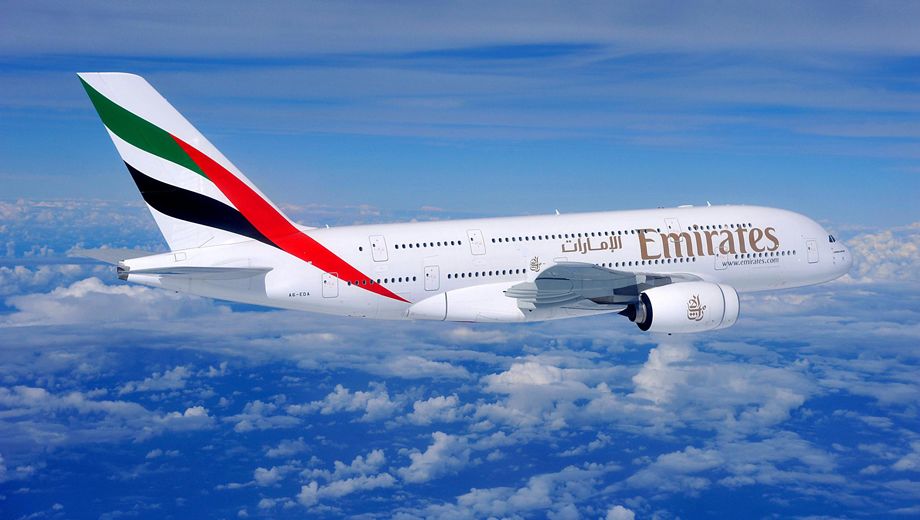
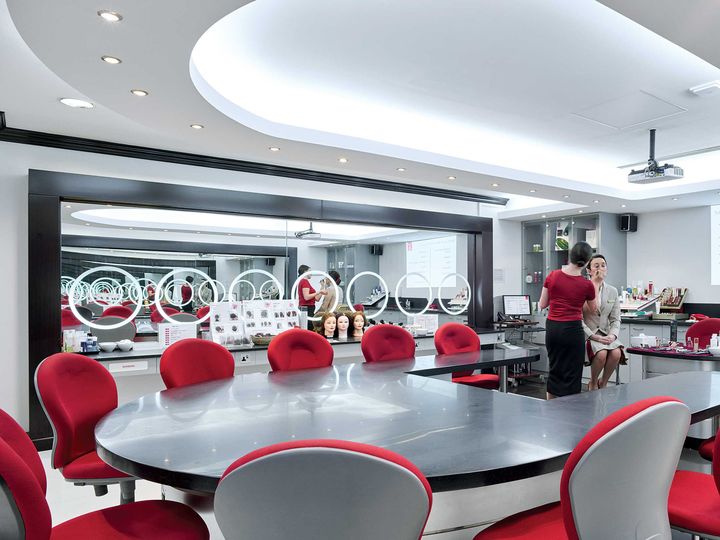
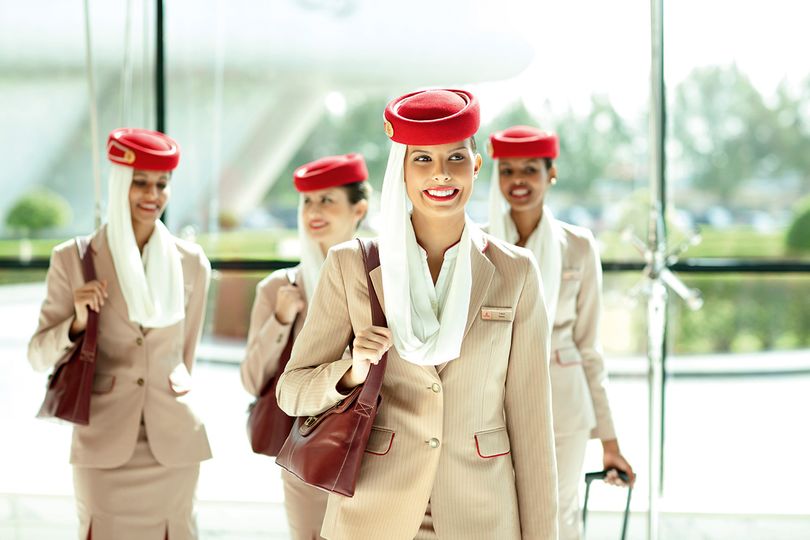
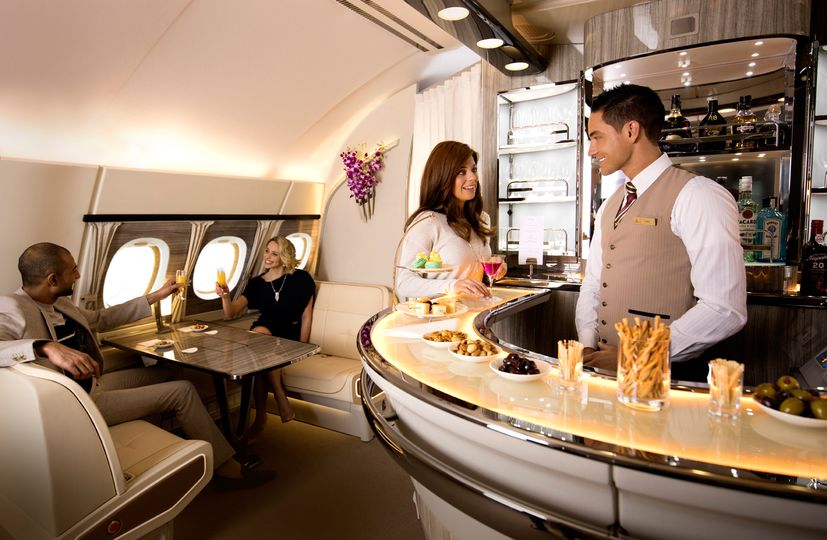
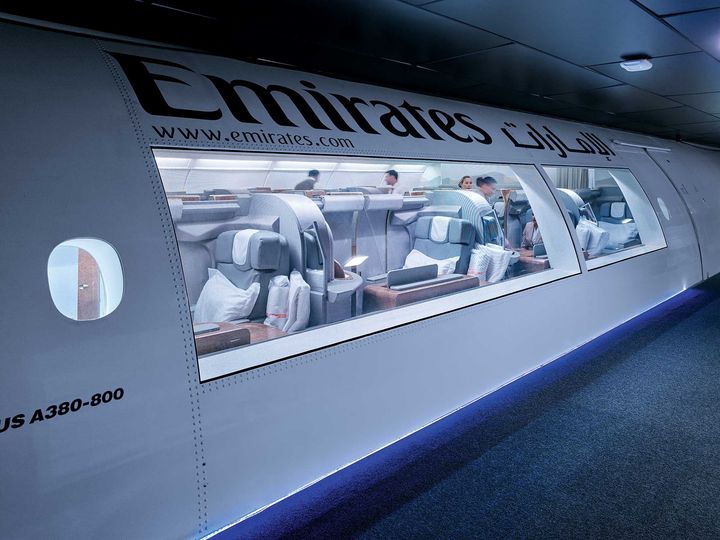
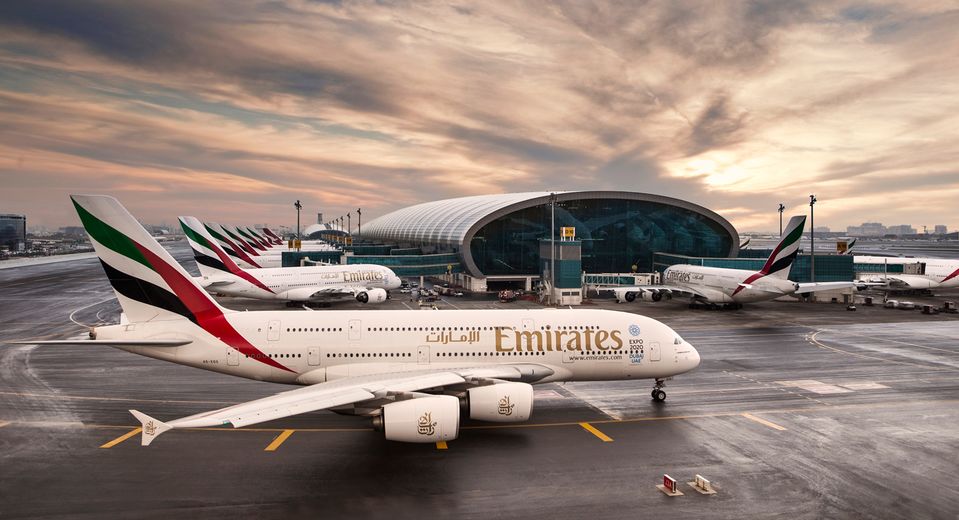
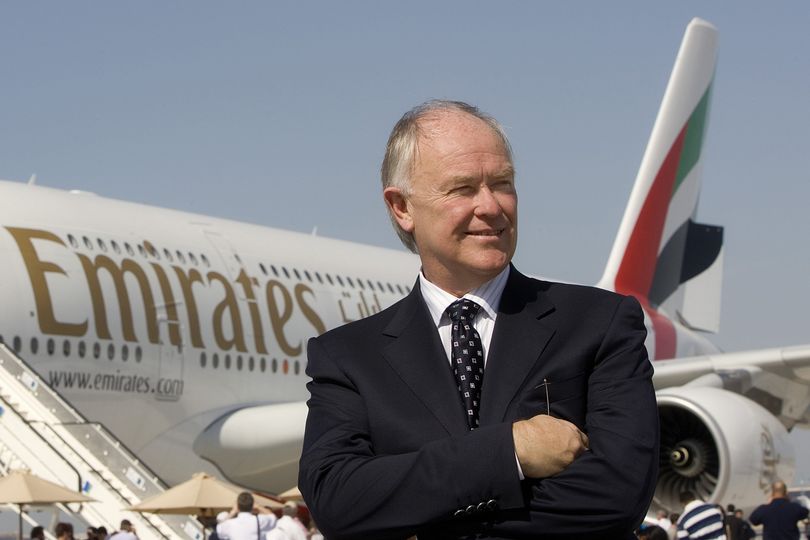
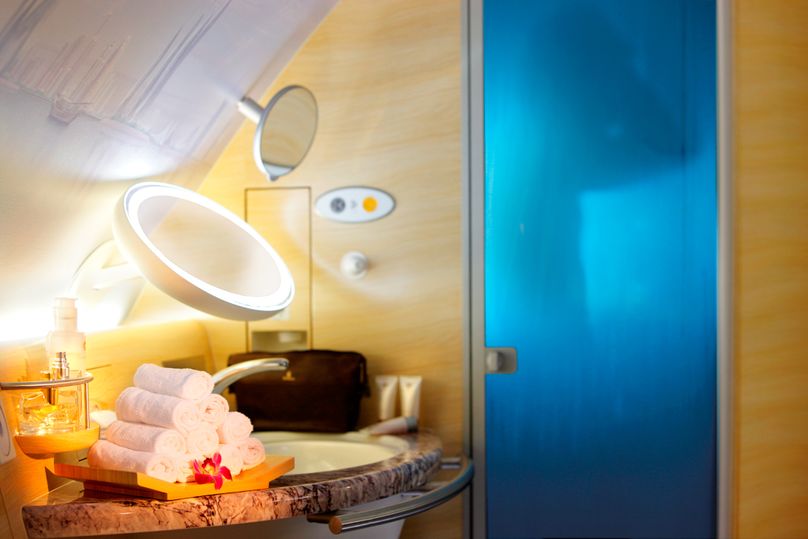
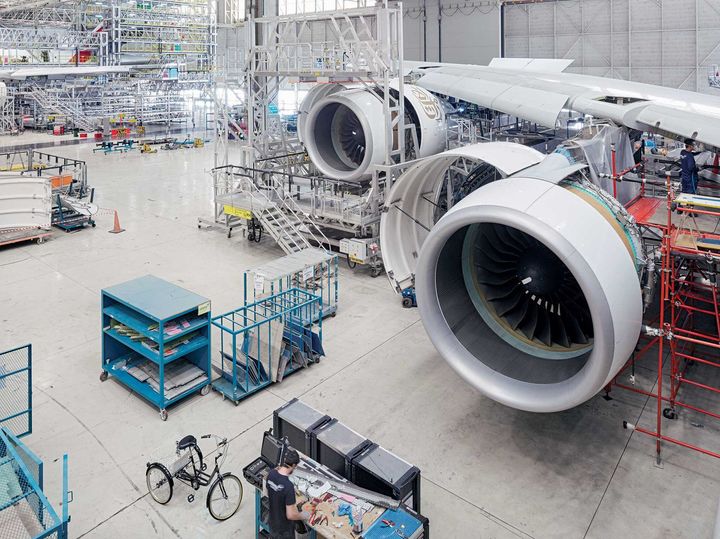
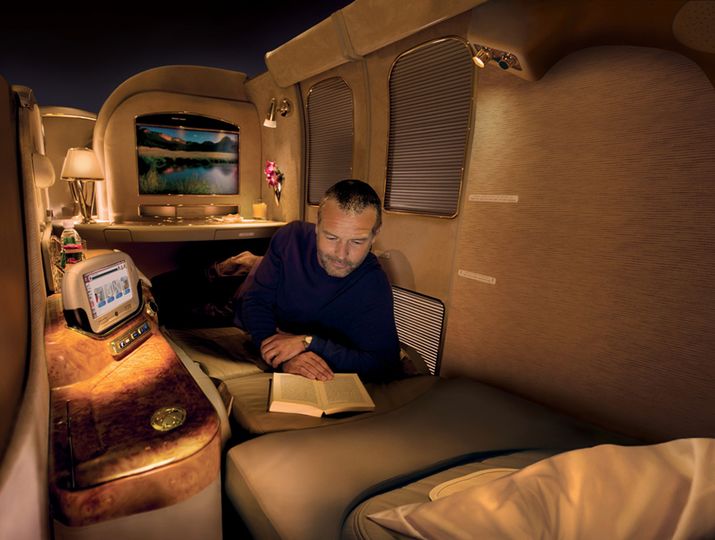
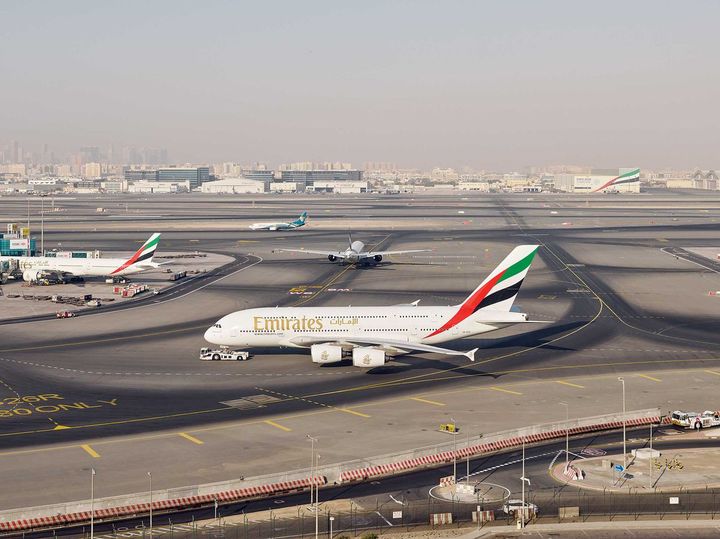

Virgin Australia - Velocity Rewards
13 Jan 2015
Total posts 580
20 May 2015
Total posts 579
It depends on your definition. It certainly is the most bling-y and the bar is very fun (and most airlines don't have that). That said it isn't the most spacious, and whilst the booze selection is quite top-shelf in some respects (Hennessy Paradis) other airlines are at least competitive and sometimes superior (JAL has better champagne in First).
Qantas - Qantas Frequent Flyer
28 Dec 2011
Total posts 95
Don't fly or use EK, the product is below that of other airlines. QR SIA and QF are better.
03 May 2013
Total posts 684
Some the Qantas Female cabin crew could take on a few pointers from Emirates cabin crew re grooming and appearance that's for sure. Qantas cabin crew certainly rarely look as good on board as they do in promo pics, ads or even at the end of the current safety video.
Virgin Australia - Velocity Rewards
02 Sep 2016
Total posts 7
That's because Qantas doesn't believe the performance of their female staff should be judged on their ability to fit a stereotype.
03 May 2013
Total posts 684
I love Qantas but I'm not an apologist for them. Their F class is inferior to most other first rate carriers except for the seat/bed which I think is by far the best. The food, lavs, amenity kits, polish of crew service and soon to be one combined lounge for F pax in SIN and LHR make it interior. Simple. Next time you're in Dubai compare the QF crew with all the EK crew around them -presentation differs greatly. I don't like the super bling of EK either but they are redoing interiors to reflect a less blingy theme. Just look at the new A380 bar refurb. It seems the negative ratings come all at once QCC staff ? ;)
Qantas - Qantas Frequent Flyer
09 May 2011
Total posts 362
Emirates cabin crew don't step foot into the airport. They have a crew base at a different building and are bussed to the aircraft so I struggle to see how you've "compared" Qantas and Emirates crew at Dubai Airport.
Qantas - Qantas Frequent Flyer
30 May 2013
Total posts 383
Wow, sexist much?
Qantas - Qantas Frequent Flyer
29 Nov 2013
Total posts 475
Joe,
I don't speak for Qantas, but as a customer of the airline and a father of two young girls, your comment about Qantas crew is unfair - which is being polite to you because I wanted to post a much stronger rebuttal.
Singapore Airlines - KrisFlyer
02 Dec 2016
Total posts 47
Pretty sure Qantas does not allow tattoos on exposed skins and there are presentation and grooming guidelines like all other airlines.
Qantas - Qantas Frequent Flyer
29 Nov 2013
Total posts 475
There are numerous articles documenting how Qantas approaches etiquette and appearance.
Virgin Australia - Velocity Rewards
24 Aug 2011
Total posts 780
Lovely writeup. Still flying SQ.
Qantas - Qantas Frequent Flyer
30 May 2014
Total posts 49
A fascinating write-up. I look forward to a proper visit to DXB and the long-haul EK product next month having only ever flown them trans-Tasman several times.
11 Dec 2015
Total posts 85
A great writeup. What I find equally fascinating is those airlines that haven't "made it" in the same way that the ME3 have.
14 Nov 2011
Total posts 23
Great write-up, made for some interesting reading. I cant say much for Business or First Class on Emirates (having never flown them) but their Economy Product is still one of the best currently, especially their IFE which is the best I have experienced. (their seat pitch is contentious on their B777s, but me being short have found them adequate).
Emirates Airlines - Skywards
11 Mar 2015
Total posts 190
Wow-the full story-yet this is all nonsense,anyone who flew with them and spend the connecting time at their business lounges knows what an overcrowded mess they created,the crew is average just came back a week ago and they were plastic,no personalities whatsoever,I flew with them every year in the past 5 but standard is going down,the quality of the food is mediocre,and the overcrowding is unbearable at the business lounge,decided this time,to give them a miss in the future,Singapore or Qatar much better airline for the same price
09 May 2015
Total posts 33
I tend to agree...they do great PR, as reflected in this article but the acrual hard and soft product is a mixed bag (as the "6" Skytrak passenger rating reflects). At peak times, the DXB lounges can be atrocious but off-peak is fine. Their outstation lounges are very nice and the chauffeur drive a nice perk as well.
25 Sep 2013
Total posts 1242
What a great article.
09 May 2015
Total posts 33
It's good to see both Dubai and Emirates upholding and enforcing proper social norms and standards of behavior for their citizens and employees. The West could certainly learn some things from them in this respect.
Qantas - Qantas Frequent Flyer
18 Mar 2016
Total posts 21
Fascinating read.
Qantas
19 Apr 2012
Total posts 1429
I agree with markpk sometimes QF staff are frustrating but they are individuals who are mostly friendly and genuine and good for a joke. The uniformity of EK is not a plus.
Qantas - Qantas Frequent Flyer
01 Mar 2013
Total posts 171
16 Dec 2016
Total posts 58
Give me Qantas's real and consistent Crew any day. I have had the 2 worst Customer service experiences in my life in Emirates First. A company that large cannot control their service. Also as a Father of a girl who wants to become a flight attendant I would welcome the care and protection that working for Qantas would offer compared with weigh ins and total control that Emirates and Singapore insist on. I don't speak for Qantas either but I'm bloody proud of their unsubsidised success and how they represent Australia on the world stage. It's time we got behind our local carrier the same way kiwis do for Air NZ
Singapore Airlines - KrisFlyer
02 Dec 2016
Total posts 47
Just because QF is an Aussie airline does not mean Australians need to blindly support them. And SQ is not subsidized bt the SG govt.
Qantas - Qantas Frequent Flyer
11 Nov 2015
Total posts 38
Can't help but note that Emirates hubbing is exactly what Singapore Govt did ages ago to boost Singapore. Good on Qantas for announcing they are ditching Emirates and going back to Singapore, and then, overfly them all...
Qantas - Qantas Frequent Flyer
07 Jul 2017
Total posts 3
@desafinado74 I don't think anyone suggested blindly following QF did they? If they did maybe you can point out where that was stated? I admit that QF is probably not the best service airline in the world but they're also not the worst. I would personally put them towards the top. What I can guarantee is that in my line of work, their flight crew are among the best trained in the world. I have only ever found QF staff to be professional and courteous. In addition to that QF has great historic and cultural significance to a lot of Australians. So whilst you are free to fly whoever you choose, I agree with @Markspark that more Aussies should get behind them and if not at least respect the contribution QF has made to the aviation industry over the last 96 years. The negativity towards QF from a minority of people here astounds me. If they're not your cuppa tea fly China Southern, Emirates or Air Asia etc. Nobody is stopping you.
27 Mar 2014
Total posts 39
Much more of an East Coast centric, or even Sydney centric, airline no matter how much they like to drape themselves in the Australian flag...
30 Mar 2012
Total posts 13
How can you be so sure SQ does not get government help? Who supports them to encourage stopovers no matter where your final destination is.
17 Sep 2015
Total posts 371
SQ probably gets some 'assistance' from Temasek Holdings, the Singaporean government investment company that's like our Future Fund but I bet SQ is a lot more rational in its decision making than the ME3.
Hi Guest, join in the discussion on Is high-flying Emirates running out of sky?